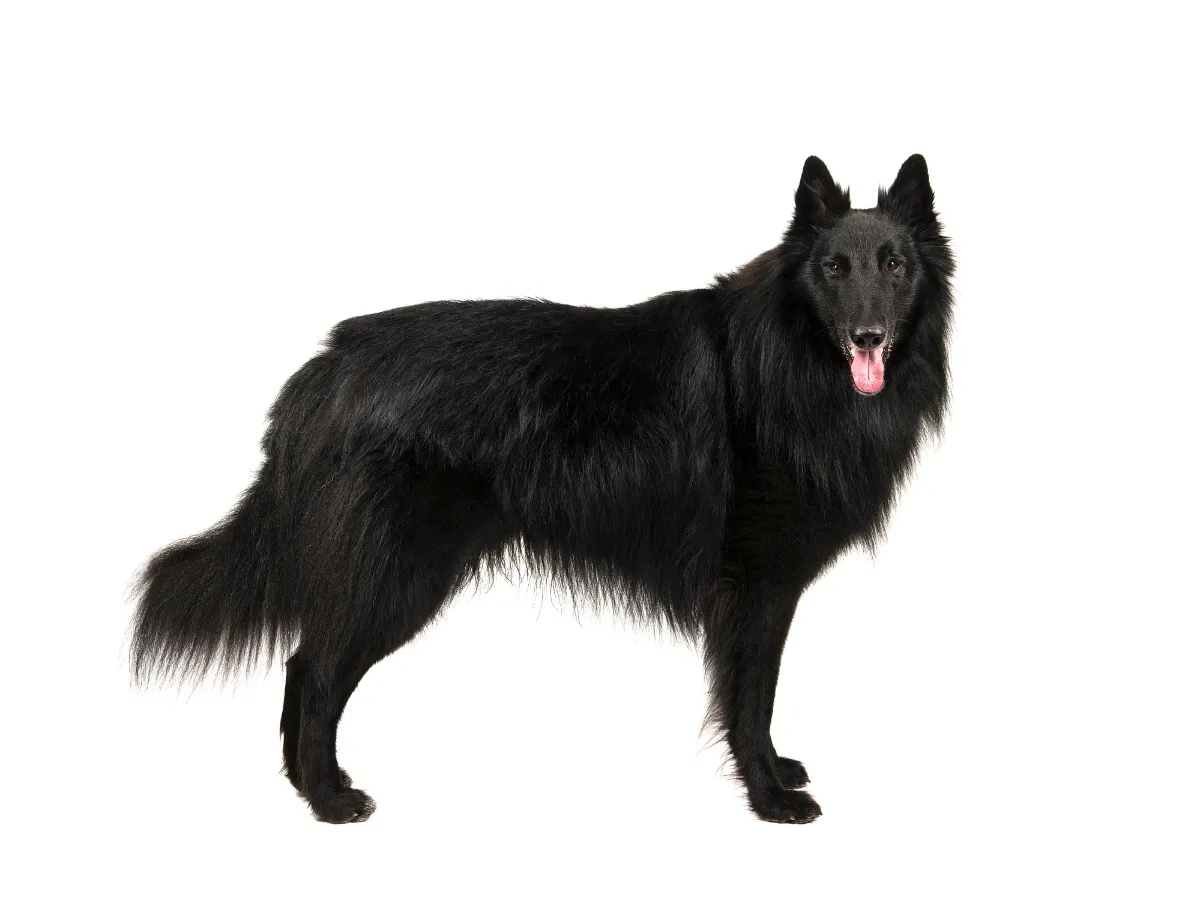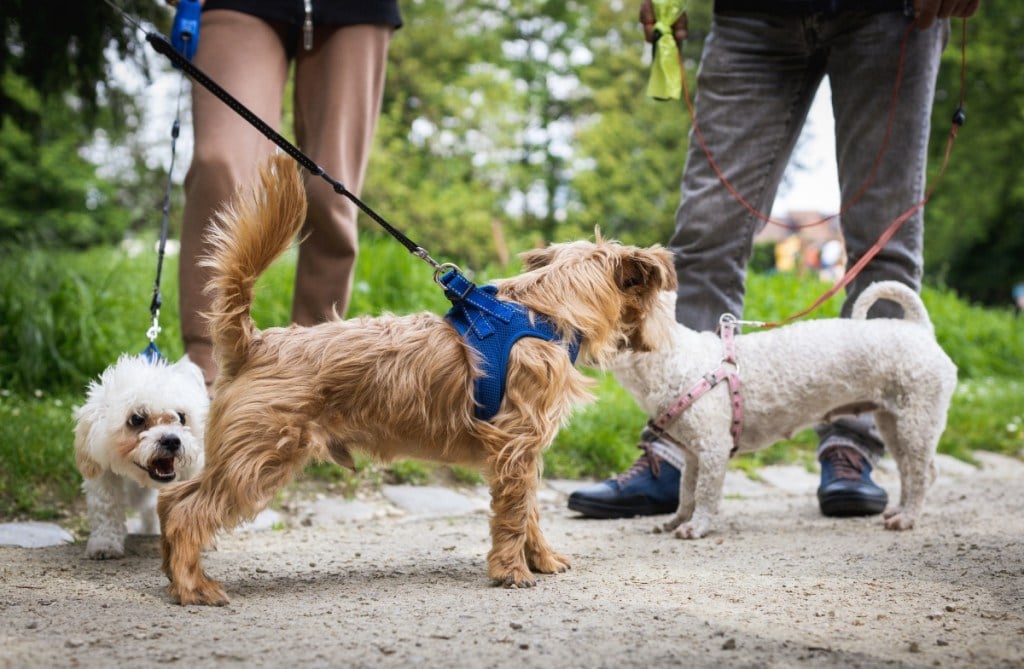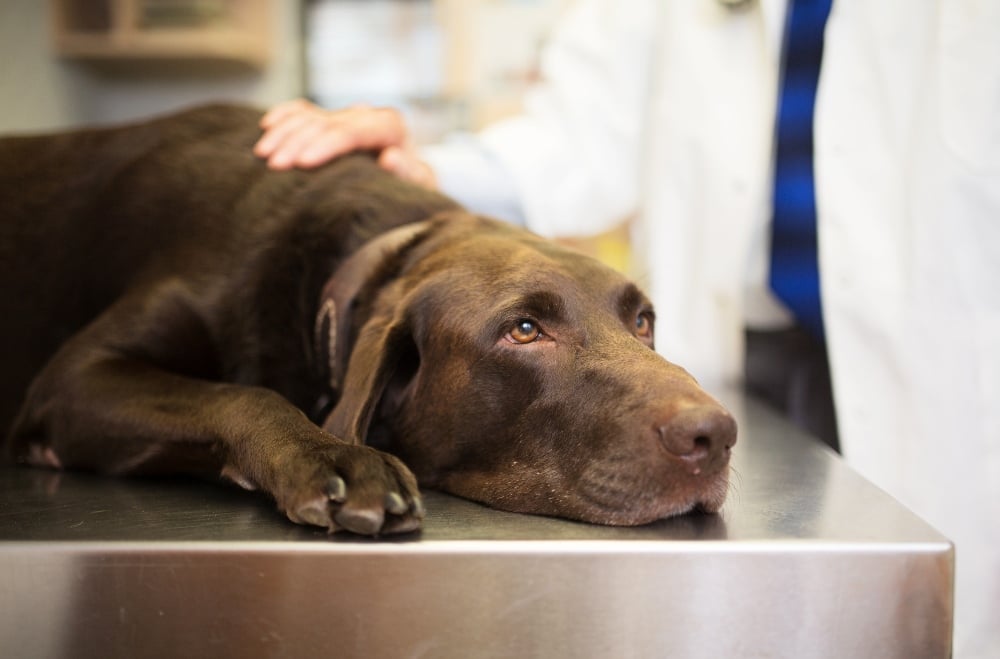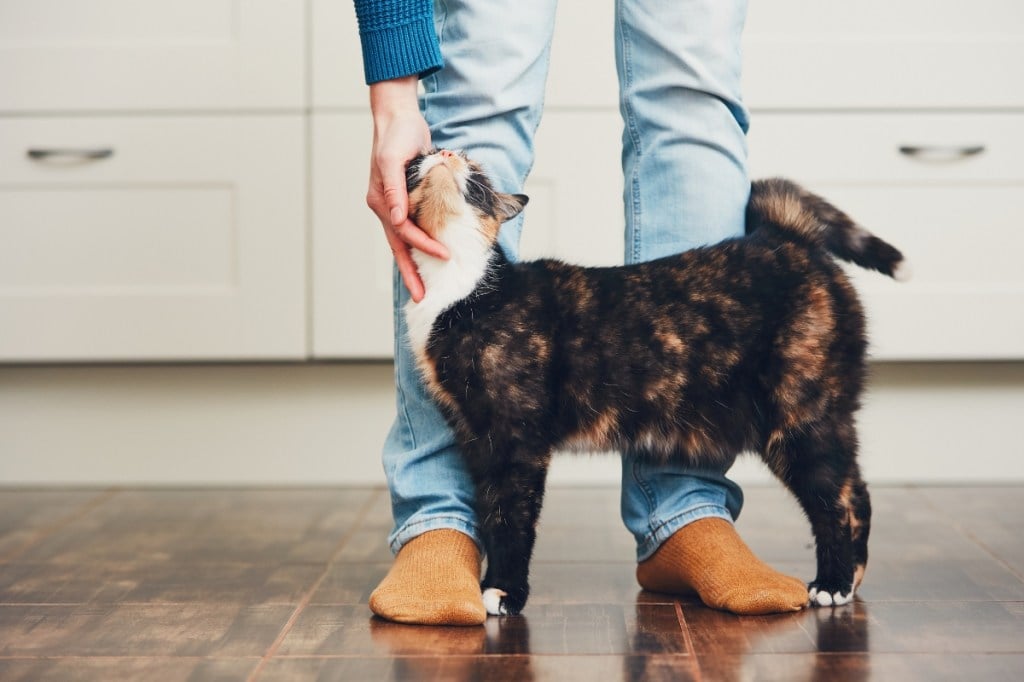The Groenendael is a type of Belgian Sheepdog known for its proud demeanor, piercing intelligence, and unshakable loyalty. Originally bred for herding, the breed was developed in Belgium during the late 19th century and distinguished from other Belgian Shepherd types—like the Malinois or Tervuren—by its elegant, flowing black coat.
Named after the village of Groenendael and the kennel of breeder Nicolas Rose, this dog’s résumé includes work as a livestock mover, war dog, police partner, and family guardian. Today, the Groenendael remains a purpose-driven, high-energy companion that thrives when given structure, engagement, and a close bond with their people.
What are the Groenendael’s Characteristics?
The breed standard of the Belgian Sheepdog (Groenendael) reflects a balanced, square-built dog with elegance, alertness, loyalty and unwavering presence. It combines strength with light-footed agility, always appearing ready to move yet composed in demeanor.
Size and Appearance
- Males: 60–80 lbs, average 24–26 inches tall
- Females: 40–60 lbs, average 22–24 inches tall
- Solid black coat with a dense undercoat and longer outer coat
- Elegant build with upright ears and a poised expression
Temperament and Personality
Groenendaels are not couch potatoes. They’re alert, protective, and happiest when they have a job to do. That might mean agility training, herding trials, or simply being your shadow around the house.

Breed Snapshot
| Breed Characteristic | Level (High, Medium, Low) |
| Affectionate with People | High |
| Good with Kids | Medium to High |
| Good with Pets | Medium |
| Need for Exercise | Very High |
| Energy Level | High |
| Intelligence Level | Very High |
| Able to be Trained | High |
| Amount of Barking | Medium to High |
| Amount of Shedding | Medium to High |
How to Care for a Groenendael?
Bringing home a Groenendael means signing up for a high-intensity, highly rewarding partnership. They’re not the kind of dog that naps all day. They need physical outlets, mental stimulation, and consistent training to stay balanced.
Living Environment
- Best suited to homes with space (yards, trails, or frequent outdoor access)
- Apartment life is possible, but only with serious commitment to exercise
- Thrive in structured households with experienced or confident handlers or with pet parents who are willing to learn
Exercise and Enrichment
- Minimum of 90 minutes of physical and mental exercise daily
- Activities like hiking, advanced obedience, agility, or scent work are ideal
- Puzzle toys and trick training help prevent boredom and behavioral issues
Training and Socialization
- Respond best to positive reinforcement and clear guidance
- Early socialization with people and other animals is a must
- Harsh corrections can damage trust — be firm, fair, and rewarding
Grooming Needs
- Weekly brushing (daily during seasonal shedding)
- Bath every 6–8 weeks or as needed
- Routine nail trims, ear cleaning, and dental care
Nutrition
- High-quality, balanced diet for sustained energy and joint health
- Puppies should eat large-breed puppy food for 12–15 months
- Adults do best with two meals daily and no intense exercise right after eating
- Fresh water should be available at all times
- Consult your vet for food selection, especially for home-prepped meals
Common Health Concerns
- Hip and elbow dysplasia
- Progressive retinal atrophy (PRA)
- Epilepsy
- Hypothyroidism
- Bloat (gastric torsion)
- Seasonal skin sensitivities
With proper care and regular vet visits, Groenendaels often enjoy healthy lives into their early to mid-teens.
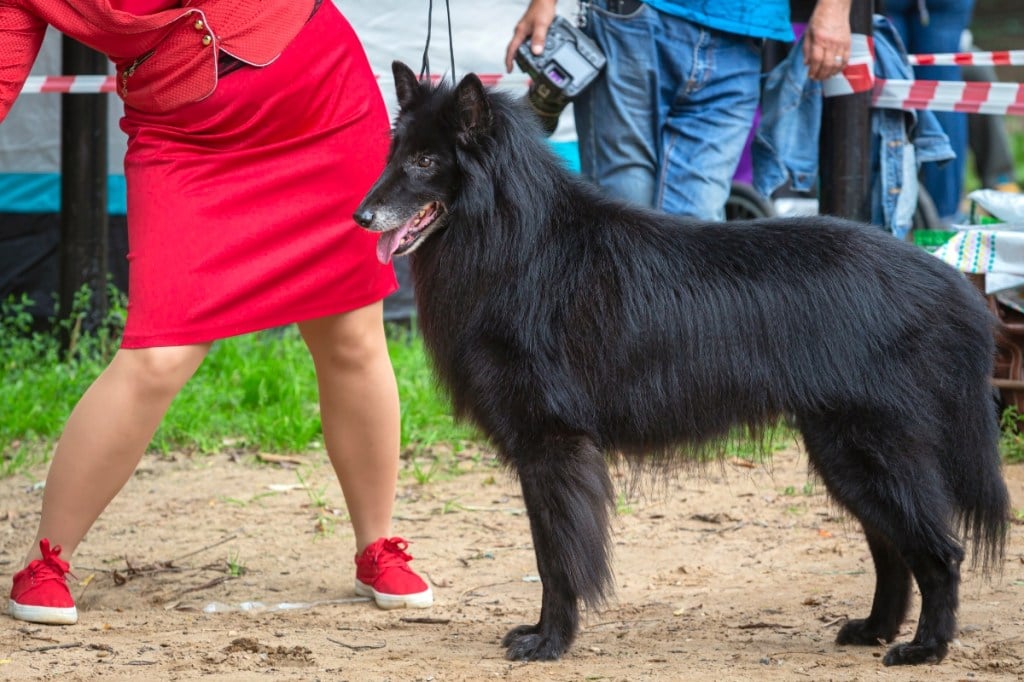
Should I Get Pet Insurance for My Groenendael?
Yes. With such an active, high-performing breed, unexpected injuries and chronic health conditions are always a possibility. That’s where pet insurance comes in. Healthy Paws helps cover vet bills for everything from emergency surgeries to long-term treatment plans, giving you peace of mind as you give your Groenendael the life it deserves.
Coverage includes accidents, illnesses, genetic conditions and alternative therapies. You can visit any licensed vet in the United States, and most claims are processed within just a few days.
Ready to protect your new companion? Get your Healthy Paws quote today.
Frequently Asked Questions about Groenendaels
Are Groenendaels Good Family Dogs?
Yes, in the right setting. Groenendaels are deeply loyal and affectionate with their people, including children, although like all dogs, care should be taken around young children. They do best with active families who offer structure, exercise, and ongoing training. Groenendaels may initially be reserved with strangers but form tight bonds with their core group.
Are Groenendaels Hard to Train?
Not if you know how to motivate them. These dogs are incredibly intelligent and eager to learn. They respond best to positive reinforcement and mental challenges. Harsh training methods can cause them to shut down or become wary.
Do Groenendaels Bark Often?
They’re alert and protective, so barking can happen—especially if they feel their home or people need defending. That said, with proper training and enough physical and mental stimulation, their barking is manageable.
Does the Groenendael Have Health Issues?
While generally healthy, Groenendaels are prone to some breed-specific issues like hip and elbow dysplasia, PRA, and epilepsy. They may also be sensitive to anesthesia. With regular vet care and attention to diet, most live long, healthy lives.

Which Breeds are Similar to the Groenendael?
If you’re drawn to the Groenendael’s intelligence and drive but want to explore your options, you might also look at:
